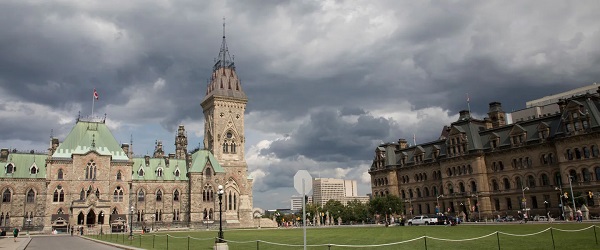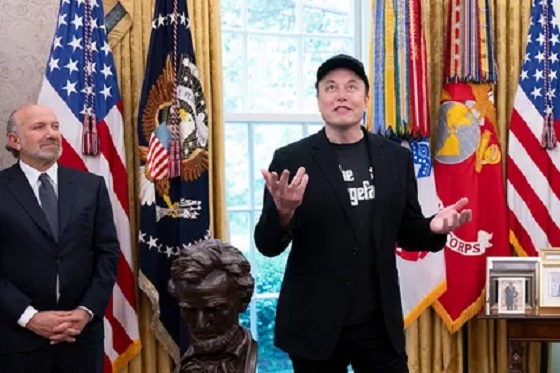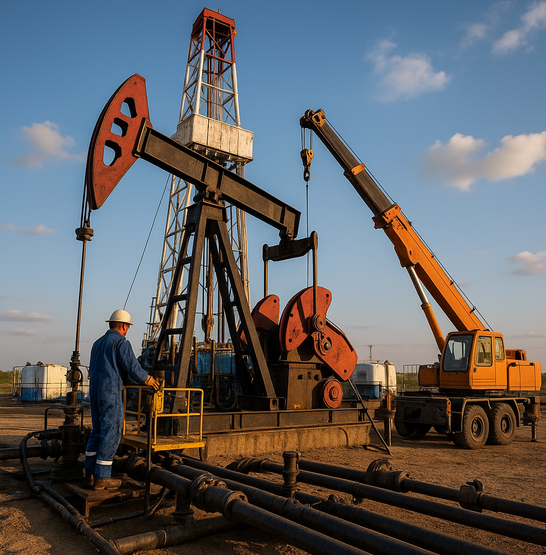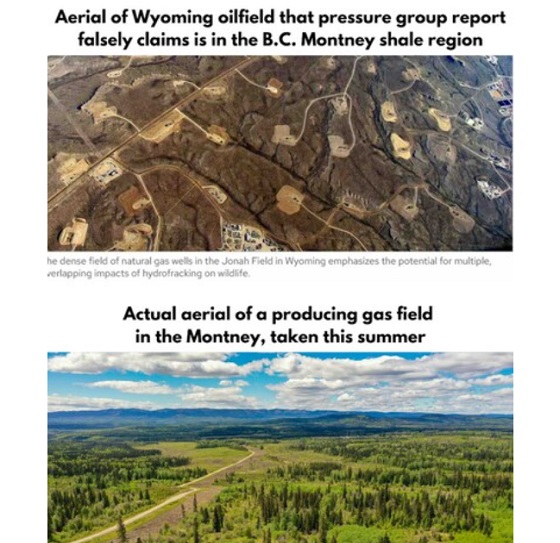Business
Carney’s cabinet likely means more of the same on energy and climate

From the Fraser Institute
Prime Minister Carney recently unveiled his new cabinet, and he made some changes in some key policy areas including Energy and Natural Resources, Environment and Climate Change, and Transport and Internal Trade. What do these cabinet picks tell us about the potential policy focus of Carney’s government moving forward?
At the helm of the Energy and Natural Resource portfolio, Carney appointed Timothy Hodgson, a former banker and chair of Ontario’s massive Hydro One electricity utility. A quick search of Hodgson’s previous experience and opinions on matters of energy and natural resource policy comes up rather dry—he is something of a cypher. Acquaintances are quoted in several articles suggesting he has a pragmatic, pro-business orientation, but that is about all we can glean.
Still, what we do know is that Hodgson is replacing Jonathan Wilkinson, previously a supporter of highly aggressive greenhouse gas emission reductions, and aggressive regulation in the energy and natural resource policy spaces when part of Trudeau’s cabinet. So, with a mostly blank slate to stand on, and an ostensibly pragmatic “banker” mentality, we can expect (hope?) that Minister Hodgson blazes a less extreme path forward on energy and natural resource issues, balancing in a more even-handed fashion protection of the environment and natural resources with Canada’s need for economic productivity.
Hodgson’s partner on the energy, natural resource environmental policy front will be Julie Dabrusin, new Minister of Environment and Climate Change, replacing Uber-environmentalist Steven Guilbeault. Dabrusin was previously Secretary to the Minister of Environment and Climate Change, and Secretary to the Minister of Natural Resources in the Trudeau government. The most logical expectation would be to expect she will continue to champion Trudeau-esque policies, tempering any hopes we might have for the potentially more moderate Minister Hodgson as bellwether of Canada’s energy, natural resource and environmental policies.
Finally, Carney appointed Chrystia Freeland as Minister of Transport and Internal Trade. Freeland is a strong believer in the climate crisis, an intense regulator thereof, and seems to believe that transportation must be electrified, pedalized and mass-transificated (okay, I made that last term up) to save the planet. So, anyone hoping for a move away from the green-transportation agenda, away from an all electric-car, mass-transit oriented future, and back to something favouring (or at least not-demonizing) an automobile-centric lifestyle might want to rein in their expectations.
Unfortunately, in Carney’s cavalcade of cabinet officials, he did not create a new Minister of Regulatory Reform and Right-Sizing (again, my term). One of Canada’s biggest public policy illnesses is its plague of regulations. Canada is drowning under a mountain of regulatory red-tape and badly needs a minister with scissors. Canada wants no part of a U.S.-style Department of Government Efficiency (DOGE), but a Minister of Regulatory Reform and Right-Sizing, akin to what British Columbia had briefly in 2001, would be a policy tonic Canada needs badly.
Little is known about exactly where the bulk of Prime Minister Carney’s new cabinet will take us, but the safe betting—in areas of environment, natural resources, climate change and transportation—is that we’re likely to see a continuance of Trudeau-era policies, though promulgated by somewhat more bland less-obviously-zealous eco-warriors. Time will tell.
Business
The Digital Services Tax Q&A: “It was going to be complicated and messy”

A tax expert on the departed Digital Services Tax, and the fiscal and policy holes it leaves behind
It’s fun, and fair, arguing whether Mark Carney “caved” in suspending the application of Canada’s Digital Services Tax to revive broader negotiations with the Trump administration. But I figure there are other dimensions to this issue besides tactics. So I got in touch with Allison Christians, a tax law professor at McGill University and the founding director of the Canadian Centre for Tax Policy.
In our talk, Christians discusses the policy landscape that led to the introduction of the DST; the pressure that contributed to its demise; and the ways other countries are addressing a central contradiction of the modern policy landscape: without some kind of digital tax, countries risk having to impose costs on their own digital industry that the overwhelmingly US-based multinationals can avoid.
I spoke to Christians on Friday. Her remarks are edited for length and clarity.
Paul Wells: I noticed in your social media that you express inordinate fondness for tax law.
Allison Christians: You will not find a more passionate adherent to the tax cult than me. Yes, I do. I love tax law. Of course I do. How could you not? How could you not love tax law?
PW: What’s to love about tax law?
Christians: Well, tax law is how we create our country. That’s how we build our society. That’s how we create the communities that we want to live in and the lifestyle that we want to share with our neighbours. That’s how: with tax law.
PW: I guess the goal [of tax policy] is to generate the largest amount of revenue with the smallest amount of grief? And to send social signals while you’re at it. Is that right?
Christians: I don’t think so. Tax is not about raising maximum revenue. Tax is about deciding what society you’re trying to build and what portions of that society need to be made public, and what can be left to private interests which then need to profit. So we have decided in Canada, as a country, that basic minimum healthcare cannot be a for-profit enterprise. It has to be a public enterprise in order to make sure that it works for everybody to a certain basic level. So tax is about making those decisions: are we going to privatize everything and everyone pays for their own health care, security, roads, insurance, fire department etc. And if they can’t pay, then too bad? Or are we going to have a certain minimum, and that minimum is going to be provided in a public way that harmonizes across the communities that we have. And that’s what tax is about. It’s not about extracting revenue at all. It’s about creating revenue. It’s about creating a market. It’s about investing in a community. So I just object to the whole idea that tax is about extracting something from me, because what tax is doing is creating a market for me to be able to thrive. Not just me, but all of my neighbours, as well.
PW: Let’s jump forward to the events of the past couple weeks. Were you surprised when the Prime Minister suspended the Digital Services Tax?
Christians: I think “surprise” is probably too strong of a word, because nothing any political leader does to cope with the volatility of the United States would surprise me. We are dealing with a major threat, a threat that is threatening to annex us, to take our resources, to take our sovereignty, to take our communities and rip them apart and turn them into a different way of being. And that’s a serious threat. So nothing would surprise me in response to that. Disappointed, of course. But not disappointed in our Canadian response. More disappointed in the juggernaut that Trump has been allowed to become by his base, and that they’re pulling the rug out from under everyone that’s cooperated with the US agenda for decades, including us.
PW: What’s your best understanding of what the Digital Services Tax was designed to accomplish? And is it unusual as taxes go?
Christians: So to understand this, you really have to be a policy wonk, which isn’t much fun. So I’m gonna give you an example that might make it clear from the perspective of Canada. Why we might have a Digital Service Tax or might want something like it.
I want to preface this by saying that the Digital Service Tax is by no means the only way to do the underlying things we want to accomplish. Certainly other countries have been collecting DSTs and have been collecting billions of dollars, and US companies have had reserves for paying that Digital Service Tax. So we just left money on the table. But let me try to explain why we want to do the thing without getting too “tax nerdy” on you.
So I’m sure you can come up with the one Canadian company that’s streaming content on television or on digital devices.
PW: Crave?
Christians: Yeah, that’s the one. Crave is owned by Bell Media and is a Canadian company. And Crave pays taxes in Canada. Crave has to compete against Netflix, which does not have to pay tax in Canada. Netflix just simply doesn’t have to pay the same way that Crave does unless we force them to pay. Crave has to compete with US and foreign content streamers. We may get to a point where we can get Netflix to collect some sales tax on the GST, for example. But if Netflix itself stays out of Canada, physically, but it’s still getting all those customers that otherwise Crave would have access to, then Crave is at a structural disadvantage.
Now tell me which Canadian provider competes with Google.
PW: I can’t think of one.
Christians: Exactly. There isn’t one. How are we supposed to get a homegrown competitor when our competition simply does not pay taxes, and any one we would grow here in Canada has to pay tax here? So we have to understand the Digital Service Tax as simply our response to the fact that we normally do not tax a company unless they are physically located in Canada. But now we’ve got to go into this digital space and say: you’re still here, even if we can’t see you and talk to you, you’re still here. You’re doing something in our market. And that’s what the Digital Service Tax was trying to deal with.
This Substack is reader-supported. To receive new posts and support my work, consider becoming a free or paid subscriber.
PW: Now, how are companies likely to respond to this Digital Services Tax? It seems to me the likeliest outcome would be that they would pass those costs on to their customers.
Christians: Yes, that is what companies have said they would do. Google talked about passing those costs on to the customers. And their customers obviously are advertisers. I want to point out that advertisers in Canada used to advertise in local newspapers and media. Now they advertise on Facebook, owned by an American-headquartered Company, Meta. Right now, they advertise on those foreign platforms, so we don’t have those advertising dollars here. Advertisers might have had to pay the Digital Service Tax if Google, or whoever, had passed it on to them. I think it’s fair to say, that Canadians advertising on those foreign platforms would have faced a gross-up to cover that tax.
PW: So, the net effect is that it just becomes more expensive for Canadian consumers. I’ve seen it argued that all this tax would have succeeded in doing is making Netflix more expensive.
Christians: Okay, that’s possible. I mean, that assumes the supply is totally elastic: you can increase the price of Netflix, and people will still pay it indefinitely. Right? So that’s the assumption in the short term. But the long-term assumption is that Crave becomes more competitive — because its competitors are paying the same tax that it is paying. The Crave subscription price may or may not respond, but if you put pressure on the foreign service providers in the same manner that’s on the Canadian providers, it might cost more, but we’re also getting the tax.
PW: I believe the Prime Minister, in an interview with the CBC said that he was thinking of getting rid of this thing, anyway. [The quote I’m reaching for here is: “Look, what we did this week is something that I think we were going to do anyways, in the end, for the deal.” At 1:07 in this video. — pw] Why do you think he would have been leaning in that direction? And do you think that absent a Truth Social post by President Trump, he actually would have gotten rid of the thing?
Christians: I can’t speculate too much about the politics of this, because I’m not talking to many of the people that make policy, but I know the complaints about the DST, and I don’t dispute them. It was going to be a complicated tax to collect and it was going to be messy in terms of compliance. There’s a lot of uncertainty around the tax and I know there’s always an enormous amount of pressure to reduce all taxes. There’s always going to be that segment of society that sees taxes being thrown down the drain and not as an investment in the society that we want to live in.
American companies are famous for investing their money on lobbying and not in taxes. They spend their money convincing us that it would be bad for us to tax them, and they can spend a much smaller percentage of their money on lobbying and get us to believe that narrative. And the narrative is that somehow, if we tax Google, Google will go away and we won’t be able to use it. That Google won’t innovate. It’s nonsense, but it’s a story that resonates nonetheless. Was Prime Minister Carney pressured to get rid of the DST? Undoubtedly. And maybe he personally thinks there’s a better way to tax these companies than with an excise tax. I don’t fault him for thinking that. I have even written that there are better ways for Canada to collect this tax than the Digital Services Tax.
PW: I’m going to want you to tell me about these other ways. But I assume that if a Canadian government attempts any of these other ways, then the companies we’re talking about know that all they have to do is hit the Trump button and the pressure will be right back on.
Christians: That’s correct. There are a couple of [alternatives to the DST]. We could, like some other countries have done, redefine the types of income that we subject to withholding taxes in Canada. It’s a complicated technical idea, but basically any payments that go from our advertisers to Google, we could impose a withholding tax simply by expanding a couple of definitions in the Income Tax Act that would then carry over into our treaty. Now, people will push back on that, and say that you’re changing a deal, and people will object to that. And we can have an argument about that, but that possibility exists. That withholding tax is the most straightforward way to do this and we should probably already be thinking about it.
Another one that’s kind of fun, which I really enjoyed learning about when I came to Canada, is Section 19 in the Income Tax Act. So, Canadian advertisers are paying Google now, instead of a Canadian newspaper. Well, Section 19 basically says that whenever someone makes a payment for advertising to a foreign, non-Canadian media, that payment’s not deductible.
Now that provision seems to violate Free Trade rules because it changes, depending on who you make the payment to. But it’s a provision in law. The US objected to it when we adopted it by imposing a reciprocal tax on US advertisers paying Canadian outlets, which doesn’t seem to bother anybody.
PW: But the application of that will be very asymmetrical, right?
Christians: Yes, for sure. And I’ll tell you what the Canadian media noticed when we started paying for digital newspapers online: that they’re not subject to Section 19 — only print and traditional media are subject to this denial of deduction — and Canadian media advocated for this denial of deduction for online publications as well.
All you have to do is look at the wording of Section 19 — and you don’t even have to change the words — and all of a sudden all those payments to Google are not deductible. But if the payments were to Crave, they would be deductible, and if they are to the Globe and Mail, or other Canadian companies, they would be deductible. That is a different kind of advantage for the Canadian competitor that’s a little less susceptible to Trump’s understanding, and a little less susceptible to the politics that surround the Digital Services Tax. But it’s technical. You have to explain it to people, and they don’t believe you. It’s hard to understand it.
PW: Theoretically a two-time central-bank governor could wrap his head around it.
Christians: Yes, I think he could fully understand it, for sure. You’re absolutely right. Will he want to do it, though? I just don’t know.
PW: You said that there are other jurisdictions that continue, today, to successfully tax the web giants. Who are you thinking of?
Christians: Well, Austria’s been doing the Digital Service Tax since the beginning. The UK has the Diverted Profits Tax that they’ve been using. Australia has one that’s been enforced. Austria stands out because I think it was 2017, in Trump’s 1st term, and it was part of a group that Trump threatened to retaliate against, but they just quietly kept going and they’re still collecting it. Part of the narrative is that we, Canada, came too late to the DST party. We just weren’t part of that initial negotiation. We came in too late, and then it was too obvious, and people were able to isolate us from the pack.
PW: My understanding is we’re looking at a hypothetical $7.2 billion in revenue over 5 years. And that represents a shortfall that’s going to have to be found either in other revenue sources or in spending cuts, or in greater debt. Aside from the DST, do you think Canada could use a general overhaul of its tax code?
Christians: Always. Yes, absolutely! Taxes are funny, right? Because they come into every single political battle, and what ends up happening is that politicians treat the Tax Act and the tax system as a present-giving machinery, and not as a clear policy deliverance system.
I am, every day, surprised at how complicated the Canadian tax system is. It’s way too complicated. You can’t even fill out your own tax return in this country. You’re going to make mistakes because it’s just too ridiculously written. It’s too confusing. It’s too messy. So it’s time to take another look. But you need a commission [like the 1962 Carter royal commission on taxation]. You need to be bipartisan. You need to spend money on that. You need to think that the things that you do have long-term effects, and this takes political courage. And basically it requires upsetting a bunch of people and resetting things, and we just might not be at the right time politically to be doing that because people feel vulnerable to volatility from abroad. So it may not be the time to push that.
Invite your friends and earn rewards
Business
Dallas mayor invites NYers to first ‘sanctuary city from socialism’

From The Center Square
By
After the self-described socialist Zohran Mamdani won the Democratic primary for mayor in New York, Dallas Mayor Eric Johnson invited New Yorkers and others to move to Dallas.
Mamdani has vowed to implement a wide range of tax increases on corporations and property and to “shift the tax burden” to “richer and whiter neighborhoods.”
New York businesses and individuals have already been relocating to states like Texas, which has no corporate or personal income taxes.
Johnson, a Black mayor and former Democrat, switched parties to become a Republican in 2023 after opposing a city council tax hike, The Center Square reported.
“Dear Concerned New York City Resident or Business Owner: Don’t panic,” Johnson said. “Just move to Dallas, where we strongly support our police, value our partners in the business community, embrace free markets, shun excessive regulation, and protect the American Dream!”
Fortune 500 companies and others in recent years continue to relocate their headquarters to Dallas; it’s also home to the new Texas Stock Exchange (TXSE). The TXSE will provide an alternative to the New York Stock Exchange and Nasdaq and there are already more finance professionals in Texas than in New York, TXSE Group Inc. founder and CEO James Lee argues.
From 2020-2023, the Dallas-Fort Worth-Arlington MSA reported the greatest percentage of growth in the country of 34%, The Center Square reported.
Johnson on Thursday continued his invitation to New Yorkers and others living in “socialist” sanctuary cities, saying on social media, “If your city is (or is about to be) a sanctuary for criminals, mayhem, job-killing regulations, and failed socialist experiments, I have a modest invitation for you: MOVE TO DALLAS. You can call us the nation’s first official ‘Sanctuary City from Socialism.’”
“We value free enterprise, law and order, and our first responders. Common sense and the American Dream still reside here. We have all your big-city comforts and conveniences without the suffocating vice grip of government bureaucrats.”
As many Democratic-led cities joined a movement to defund their police departments, Johnson prioritized police funding and supporting law and order.
“Back in the 1800s, people moving to Texas for greater opportunities would etch ‘GTT’ for ‘Gone to Texas’ on their doors moving to the Mexican colony of Tejas,” Johnson continued, referring to Americans who moved to the Mexican colony of Tejas to acquire land grants from the Mexican government.
“If you’re a New Yorker heading to Dallas, maybe try ‘GTD’ to let fellow lovers of law and order know where you’ve gone,” Johnson said.
Modern-day GTT movers, including a large number of New Yorkers, cite high personal income taxes, high property taxes, high costs of living, high crime, and other factors as their reasons for leaving their states and moving to Texas, according to multiple reports over the last few years.
In response to Johnson’s invitation, Gov. Greg Abbott said, “Dallas is the first self-declared “Sanctuary City from Socialism. The State of Texas will provide whatever support is needed to fulfill that mission.”
The governor has already been doing this by signing pro-business bills into law and awarding Texas Enterprise Grants to businesses that relocate or expand operations in Texas, many of which are doing so in the Dallas area.
“Texas truly is the Best State for Business and stands as a model for the nation,” Abbott said. “Freedom is a magnet, and Texas offers entrepreneurs and hardworking Texans the freedom to succeed. When choosing where to relocate or expand their businesses, more innovative industry leaders recognize the competitive advantages found only in Texas. The nation’s leading CEOs continually cite our pro-growth economic policies – with no corporate income tax and no personal income tax – along with our young, skilled, diverse, and growing workforce, easy access to global markets, robust infrastructure, and predictable business-friendly regulations.”
-

 Daily Caller2 days ago
Daily Caller2 days agoTrump’s One Big Beautiful Bill Resets The Energy Policy Playing Field
-

 Business1 day ago
Business1 day agoThe Digital Services Tax Q&A: “It was going to be complicated and messy”
-

 International1 day ago
International1 day agoElon Musk forms America Party after split with Trump
-

 Carbon Tax2 days ago
Carbon Tax2 days agoCanada’s Carbon Tax Is A Disaster For Our Economy And Oil Industry
-

 Disaster2 days ago
Disaster2 days agoTexas flood kills 43 including children at Christian camp
-

 Alberta16 hours ago
Alberta16 hours agoAlberta Next: Immigration
-

 Alberta Sports Hall of Fame and Museum13 hours ago
Alberta Sports Hall of Fame and Museum13 hours agoAlberta Sports Hall of Fame 2025 Inductee Profiles – Para Nordic Skiing – Brian and Robin McKeever
-

 Crime4 hours ago
Crime4 hours agoNews Jeffrey Epstein did not have a client list, nor did he kill himself, Trump DOJ, FBI claim





